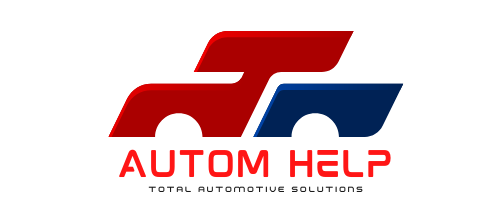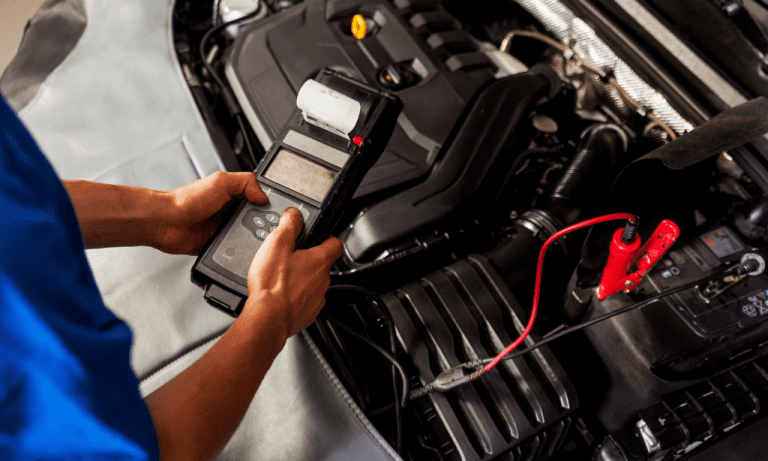How to Install a Toolbox in a Truck Bed Without Drilling: A Practical Guide
For truck owners, having a toolbox in the bed can be a game-changer, providing secure storage for tools and equipment while on the road. However, the thought of drilling holes into the truck bed can be daunting for many, especially those who want to maintain the integrity of their vehicle or lease agreements. Fortunately, there are alternative methods for installing a toolbox without the need for drilling.
In this guide, we’ll explore some innovative techniques and products that allow you to securely mount a toolbox in your truck bed without drilling any holes. Whether you’re a DIY enthusiast or simply looking for a hassle-free solution, these methods will help you optimize your truck’s storage space without compromising its structure or aesthetics.
Install a Toolbox in a Truck Bed Without Drilling?
Installing a toolbox in your truck bed without drilling can be accomplished using alternative mounting methods that ensure a secure fit without compromising the integrity of your vehicle. Follow these step-by-step instructions to successfully install your toolbox:
Step 1: Choose the Right Toolbox
Before you begin, ensure that you have selected a toolbox that is compatible with non-drilling installation methods. Look for toolboxes designed with mounting brackets or clamps that can be secured to the truck bed without the need for drilling.
Step 2: Clean the Truck Bed Surface
Thoroughly clean the surface of your truck bed where you plan to install the toolbox. Remove any dirt, debris, or rust that could interfere with the mounting process. Use a mild detergent and water, and allow the surface to dry completely before proceeding.
Step 3: Measure and Position the Toolbox
Position the toolbox in the desired location within the truck bed. Use a measuring tape to ensure that it is centered and aligned properly. Take into account any obstructions such as wheel wells or protruding components that may affect the placement of the toolbox.
Step 4: Install Mounting Brackets or Clamps
If your toolbox comes with mounting brackets or clamps, follow the manufacturer’s instructions to attach them to the toolbox. Ensure that they are securely fastened and positioned according to the measurements taken in the previous step.
Step 5: Test Fit the Toolbox
Once the mounting brackets or clamps are in place, carefully test fit the toolbox in the desired location within the truck bed. Make any necessary adjustments to the positioning to ensure a proper fit and alignment.
Step 6: Secure the Toolbox
With the toolbox properly positioned, use the provided hardware to securely fasten it to the mounting brackets or clamps. Tighten the bolts or screws according to the manufacturer’s specifications, ensuring that the toolbox is stable and immobile.
Step 7: Check for Stability and Adjustments
After securing the toolbox, double-check its stability by gently shaking it to ensure that it is firmly attached to the truck bed. Make any final adjustments as needed to ensure a snug and secure fit.
Step 8: Load the Toolbox
Once the toolbox is securely installed, load it with your tools and equipment. Distribute the weight evenly to prevent imbalance and ensure safe handling while driving.
What is truck toolbox?
A truck toolbox is an essential accessory for truck owners like you and me, providing convenient storage space for tools, equipment, and other items while on the road. It’s essentially a secure container designed to fit into the bed of your truck, keeping your tools organized and easily accessible whenever you need them.
These toolboxes come in various shapes, sizes, and materials to suit different needs and preferences. You’ll find options made from aluminum, steel, or plastic, each offering its own set of advantages in terms of durability, weight, and weather resistance.
When you’re shopping for a truck toolbox, consider factors such as size, security features, and compatibility with your truck bed. You want to make sure it fits snugly and securely without obstructing other components of your truck.
Once installed, a truck toolbox becomes your go-to storage solution for tools, towing accessories, tie-downs, and more. It helps keep your truck bed organized and clutter-free, allowing for easy access to your gear whenever the need arises.
What is the toolbox in the bed of a truck called?
The toolbox in the bed of a truck is commonly referred to as a truck toolbox or a pickup truck toolbox. It serves as a secure storage solution for tools, equipment, and other items, keeping them organized and easily accessible while on the road. These toolboxes are specifically designed to fit into the bed of a pickup truck, providing added functionality and convenience for truck owners like you and me.
Truck toolboxes come in various shapes, sizes, and materials to suit different needs and preferences. They are typically made from durable materials such as aluminum, steel, or plastic, offering protection against the elements and ensuring long-lasting performance.
How do you secure a tool box to a truck bed?
Securing a tool box to your truck bed is essential to ensure it stays in place while you’re driving and protects your tools from damage. Here’s how you can do it:
First, determine the type of mounting system your tool box uses. Many tool boxes come with mounting brackets or clamps that attach to the bed rails or the inner lip of the truck bed without the need for drilling. These brackets or clamps provide a secure anchor point for your tool box.
Next, clean the surface of your truck bed where you plan to install the tool box. Remove any dirt, debris, or rust that could interfere with the mounting process. A clean surface ensures a strong and stable attachment.
Then, position the tool box in the desired location within the truck bed. Make sure it is centered and aligned properly, taking into account any obstructions such as wheel wells or protruding components.
After that, if your tool box comes with mounting brackets or clamps, attach them to the tool box according to the manufacturer’s instructions. Ensure they are securely fastened and positioned correctly.
Next, test fit the tool box in the desired location within the truck bed. Make any necessary adjustments to the positioning to ensure a proper fit and alignment.
Then, once the tool box is properly positioned, use the provided hardware to secure it to the mounting brackets or clamps. Tighten the bolts or screws according to the manufacturer’s specifications, ensuring that the tool box is stable and immobile.
Finally, double-check the stability of the tool box by gently shaking it to ensure it is firmly attached to the truck bed. Make any final adjustments as needed to ensure a snug and secure fit.
How should a tool box fit on a truck?
Ensuring that a tool box fits properly on your truck is crucial for both functionality and aesthetics. Here’s how it should fit:
First, measure the dimensions of your truck bed to determine the available space for the tool box. Consider the width, length, and height to ensure the tool box will fit without obstructing other components or protruding beyond the edges of the bed.
Next, choose a tool box that matches the dimensions of your truck bed. It should fit snugly without leaving gaps or overhanging edges. Pay attention to any wheel wells or other features that may affect the fit, and select a tool box that accommodates these factors.
Then, position the tool box in the center of the truck bed, ensuring it is aligned properly with the sides and front of the bed. This not only provides a balanced appearance but also allows for easy access to the contents from all sides.
After that, consider the height of the tool box in relation to the truck bed rails. Ideally, the tool box should sit below the top of the bed rails to maintain visibility through the rear window and to prevent interference with tonneau covers or camper shells.
Next, test the fit of the tool box by placing it in the desired location within the truck bed. Make sure there is enough clearance around the tool box for opening and closing, as well as for accessing any additional features such as tie-down hooks or cargo management systems.
Then, ensure that the tool box is securely attached to the truck bed using the appropriate mounting hardware or brackets. This helps prevent shifting or sliding during transport and ensures a stable fit, even when driving on rough terrain.
Finally, double-check the fit of the tool box by visually inspecting it from all angles. Make any necessary adjustments to ensure that it sits flush with the truck bed and that there are no gaps or uneven surfaces. By following these guidelines, you can ensure that your tool box fits securely and seamlessly on your truck, providing convenient storage for your tools and equipment while on the road.
What is the most secure way to store tools in a truck?
The most secure way to store tools in a truck is to utilize a combination of locking toolboxes and additional security measures. Here’s how you can ensure your tools are kept safe:
First, invest in a high-quality locking toolbox specifically designed for trucks. Look for options made from durable materials such as steel or aluminum, with robust locking mechanisms that are resistant to tampering and forced entry. These toolboxes provide a secure and enclosed storage space for your tools, protecting them from theft and damage.
Next, consider installing a bed cover or tonneau cover to further secure your tools and equipment. A cover adds an extra layer of protection by concealing the contents of the truck bed and preventing unauthorized access. Choose a cover that can be securely locked to prevent it from being lifted or removed by potential thieves.
Then, utilize additional security devices such as padlocks, cable locks, or security cables to further safeguard your tools. These devices can be used to secure individual toolboxes or to lock down larger items such as power tools or generators, making it more difficult for thieves to steal them.
After that, park your truck in well-lit and populated areas whenever possible to deter theft. Avoid leaving your tools unattended for extended periods, especially in remote or isolated locations where they may be more vulnerable to theft.
Next, consider installing an alarm system or GPS tracking device on your truck to alert you in case of unauthorized access or theft. These systems provide added peace of mind by allowing you to monitor the security of your tools remotely and track your truck’s location in case it is stolen.
Finally, develop a routine for securing your tools whenever you park your truck, whether it’s overnight or during the day. Make it a habit to lock your toolboxes and activate any additional security measures before leaving your truck unattended, ensuring that your tools are always kept safe and secure.
Are truck tool boxes worth it?
Well, it really depends on your specific needs and situation. If you’re someone who frequently uses your truck for work or hauling equipment, a truck tool box can be incredibly handy. It helps keep your tools organized and protected from the elements. Plus, it frees up space inside your truck bed for other items or more cargo.
From personal experience, I can say that investing in a good quality truck tool box can definitely be worth it in the long run. It adds a level of convenience and efficiency to your work routine, saving you time and hassle searching for tools or worrying about them getting damaged.
Of course, if you rarely use your truck for work or don’t carry many tools around, then a tool box might not be necessary for you. But overall, if you value organization and protection for your tools, it’s definitely worth considering. Just make sure to research different options to find one that fits your truck and meets your needs.
Do all truck tool boxes fit all trucks?
Not necessarily. It’s crucial to check the compatibility of the truck tool box with your specific truck model. While many tool boxes are designed to fit a wide range of trucks, there can still be variations in bed sizes, shapes, and mounting configurations among different truck models.
Before purchasing a truck tool box, measure your truck bed dimensions carefully, including width, length, and height, and compare them to the specifications provided by the tool box manufacturer. This ensures a proper fit and avoids any compatibility issues.
Additionally, consider factors like the type of mounting system required for your truck – some tool boxes may require drilling while others use clamps or stake pocket mounts. Double-checking these details will help you find a tool box that fits securely and works well with your truck.
Frequently Asked Questions
Q: Can I install a toolbox in my truck bed without drilling?
A: Yes, you can. There are toolbox models available with clamp-on or stake pocket mounting systems that allow you to secure the toolbox without drilling into your truck bed.
Q: What is a clamp-on mounting system?
A: A clamp-on mounting system uses adjustable clamps that attach to the edges of your truck bed. These clamps provide a secure grip without the need for drilling holes.
Q: How do I install a toolbox with a clamp-on mounting system?
A: Simply position the toolbox in your truck bed according to your preference, then tighten the clamps securely around the edges of the bed. Make sure the toolbox is level and snug against the bed walls for stability.
Q: What are stake pocket mounts?
A: Stake pocket mounts utilize the existing stake pockets located on the sides of your truck bed. These mounts slide into the stake pockets and provide anchor points for securing the toolbox.
Q: How do I install a toolbox with stake pocket mounts?
A: Insert the stake pocket mounts into the stake pockets on each side of your truck bed. Then, position the toolbox over the mounts and secure it in place using the provided hardware or locking mechanisms.
Q: Are clamp-on and stake pocket mounting systems secure?
A: When properly installed according to the manufacturer’s instructions, both clamp-on and stake pocket mounting systems can provide secure attachment for your toolbox. However, it’s essential to periodically check and tighten the mounting hardware to ensure continued stability.
Q: Can I easily remove a toolbox installed without drilling?
A: Yes, you can typically remove a toolbox installed with clamp-on or stake pocket mounts by loosening the clamps or removing the mounting hardware. This allows for easy removal or repositioning of the toolbox as needed.
Q: Are there any drawbacks to installing a toolbox without drilling?
A: While avoiding drilling preserves the integrity of your truck bed, clamp-on and stake pocket mounting systems may not provide as secure of a fit as drilling directly into the bed. Additionally, some users may find that these mounting methods limit the placement options or overall stability of the toolbox. It’s essential to choose a mounting system that best suits your needs and preferences.
- Why Are My Car Headlights Not Bright Enough? - May 9, 2024
- How Long Can You Drive With An EVAP Leak? - May 9, 2024
- What Does B Stand for in a Car? [Full Guide] - May 9, 2024


![What Size Socket Is a Spark Plug? [With FAQ]](https://automhelp.com/wp-content/uploads/2023/07/NAPA-EverCraft-Universal-4-Size-Spark-Plug-Socket-Set-Review_000031174-768x432.webp)

